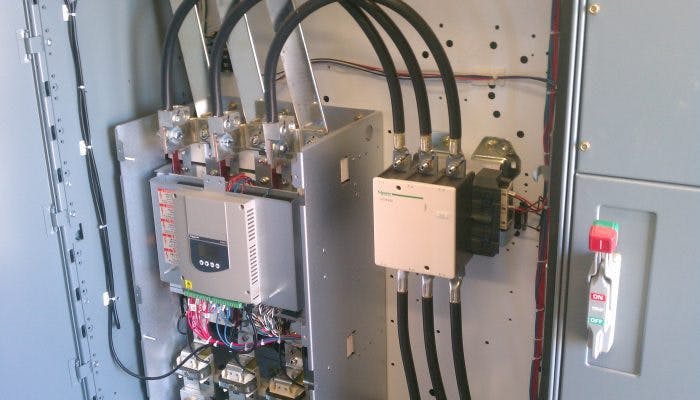Hi-Low-Hi Motor Starting: An Approach for Starting Deep Well Submersible Pumps
Category: Engineering
Written By: Scott Honeyfield, PE, and Marcelino Trujillo, PE
Date: April 19, 2016

Scott Honeyfield, PE, is a firm principal and member of the Water Resources Team. Scott has been involved in the conception, design, study, and management of numerous major civil engineering projects. Potable water infrastructure projects are his specialty. In the last 20 years, he has served in a major role in the design and development of some of the largest waterworks projects in the area.
Marcelino Trujillo, PE, CBCP, is a firm principal and team leader for the Water Resources Practice. Marcy has over 25 years of electrical engineering experience with an emphasis on industrial power systems design, plant automation, and power generation. He oversees electrical and controls systems engineering for all of Parkhill’s civil engineering projects, including water and wastewater treatment facilities, pumping stations, oil and gas facilities, and roadway illumination designs.
In order to be cost-effective, deep-well submersible pump designs typically use medium voltage motors (2,400V and above). Running at medium voltage reduces conductor size, and smaller conductors are beneficial to the design and construction of the well. However, medium voltage creates its own challenges for the operator. The number of electricians trained to work on medium voltage equipment is typically less than those who work on 480V equipment. Availability of medium voltage replacement parts is also a common issue. And finally, the Hazard/Risk Category Classification, as defined by NFPA 70E, is higher when performing tasks on medium voltage equipment.
The standard approach to starting a medium-voltage motor would be to install a medium-voltage motor starter. However, another option available to operators is a Hi-Low-Hi motor starting design. This will cost a little more, take up more overall real estate, and will not eliminate all medium-voltage gear, but it will allow the operator to utilize a low-voltage 480V starter. Motor starters, whether they are across the line, soft starts, or variable speed drives, are typically the piece of equipment that requires the most troubleshooting. Installing a starter that is a make and model already used in the water system, and which the electricians are already familiar with, will go a long way in increasing the reliability of a wellfield system.
This paper will analyze and present a Hi-Low-Hi type motor starting configuration that was designed and built for the Potter County Well Field, which supplies water for Amarillo, Texas. The incoming utility voltage was 13,200V. This voltage was stepped down to 480V for motor starting (and miscellaneous site loads), and then stepped back up to 2,400V for the feeders going to the submersible motor. This paper will address design considerations that are unique to this type of configuration. The overall goal is to provide operators with options when designing their well-gathering systems.


